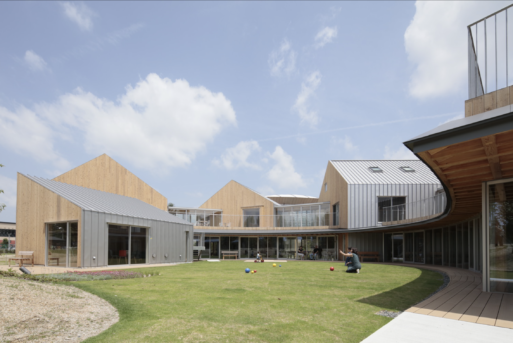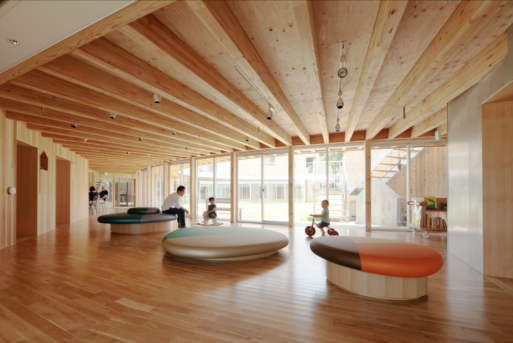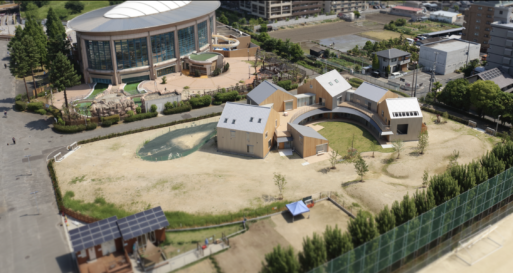
Credit: Koichi Torimura
The TSURUMI Children’s Hospice, designed by TAISEI DESIGN Planners Architects & Engineers, represents a pioneering effort in Japan to create a community-supported hospice for children. Inspired by Britain’s Helen & Douglas House, the hospice is located within Tsurumi Ryokuchi Flower Expo Memorial Park in Osaka and aims to support children with life-threatening illnesses and their families by integrating deeply with the local community.
The Philosophy Behind TSURUMI Children’s Hospice
TSURUMI asked the architects at TAISEI to design a hospice center that felt welcoming, but also more community-based than an average home. They wanted “a place like a village.” They were asked to construct the ideal form of “community-supported hospice for children.”
Part of this idea was already realized when the location of the hospice was chosen to be in a public square. That means that children staying at the hospice would be able to interact with the community. But the hospice directors wanted to infuse that natural, village feeling within the structural design.

Credit: Koichi Torimura
The Design
This idea materialized into an all wood-frame structure featuring six “houses” connected by a central “street.” Each house offers distinct rooms such as playrooms, music rooms, living areas, kitchens and accommodations. This layout ensures a variety of spaces that encourage exploration, interaction and a sense of normalcy.
Natural light is a prominent feature, with large windows and skylights filling the spaces with sunlight. This not only enhances the aesthetic but also provides therapeutic benefits. The use of natural materials, such as wood, creates a warm and inviting atmosphere, making the hospice feel more like a home. The design includes deep eaves to block the summer sun and allows a comfortable breeze through the “space of the street,” ensuring year-round comfort.

Credit: Koichi Torimura
Outdoor spaces are equally important, with gardens and playgrounds providing areas for relaxation and recreation. These spaces are seamlessly integrated into the design, promoting easy access and usability. The design also emphasizes a primitive house form, which is recognizable and comforting to all visitors.
The design of TSURUMI Children’s Hospice exemplifies the power of thoughtful design in creating healing environments. Through natural materials, abundant light, and varied communal spaces, the hospice offers a sanctuary of comfort and care, making a profound difference in the lives of its young residents and their families.

 TAISEI DESIGN Creates TSURUMI Children’s Hospice
TAISEI DESIGN Creates TSURUMI Children’s Hospice


 How Dare You Die Now!
How Dare You Die Now!
 Debating Medical Aid in Dying
Debating Medical Aid in Dying
 “Help Me, Helen”
“Help Me, Helen”














